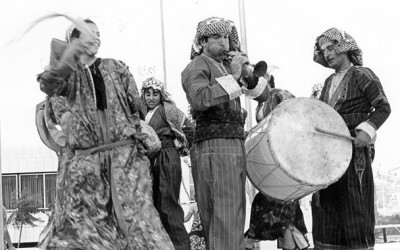In societies, one of the cultural riches that is often considered as the national, social, and cultural definition of a nation is "music".
In today's developed world, they use their music as a means of proving their identity, and recognizing their rich, and ancient history and authenticity; that is why we see various carnivals and festivals held around the world every year for each country, nation, and society to showcase their culture, customs, and traditions, especially with their dances, music, and costumes, to show the richness of their folklore.
The Kurdish nation, which has a long history and an ancient civilization in the region known as "Mesopotamia" and has its own folklore, often participates in international festivals and often wins first place in the world for showing its culture, weddings, and music.

In this article, we will discuss the richness and antiquity of Kurdish music. Some sources confirm that Kurdish music began during the rise of civilization in Mesopotamia and its origins go back to the rise of religion during the time of "Prophet Noah, Prophet Abraham، and Prophet Solomon" to the rise and emergence of Islam and has been under the influence of religions.
When we say that religion has influenced the existence, creation, and development of Kurdish music and songs, its history goes back 10,000 years ago. We are not only referring to Islam but the origin of Kurdish music is linked to fire worship, Yazidism, Zoroastrianism, etc.

The music, rhythm, and Maqam of some Kurdish music that have been preserved to this day and have remained unchanged with the development of technique and modernization of musical instruments are defined as the ancient authenticity of Kurdish music such as Daff, Dunbak or Tamblak, Daholl, Blour, Saaz, and Tambour.
Daff - Monks and Sufis used Daff on religious occasions. The Kurdish people used this instrument for weddings, dances, and celebrations.
Dumbak - or tamblak used on the occasion of war, attack, and invasion. The Kurdish people used this instrument as part of their musical instruments.

Daholl - Daholl was used as a command, warning, and gathering of people during the time of the ancient rulers of Mesopotamia, especially during the rise of Islam. The Daholl was mostly used to warn people at dawn for fasting during the month of Ramadan. Later, the Kurdish people used it as one of the musical instruments at parties and ceremonies.
Blour – Blour currently has different types and has been changed. The types are Blour, Zurna, Balaban, Nay, May, Duzala, etc. As early as the time of Prophet Abraham, when many prophets were shepherds, Blour was used for gathering, grazing livestock, and irrigation. That is, it became the language of communication between shepherds and livestock. It was then used and preserved as one of the musical instruments of the Kurdish nation.
Saaz and Tambur – This was used for religious ceremonies during the Zoroastrian period and is recognized and preserved as one of the oldest Kurdish musical instruments. Today there are many types of Saaz and Tambur.
This was the relationship between religion and the emergence of Kurdish musical instruments, which have a history of nearly 10,000 years.









